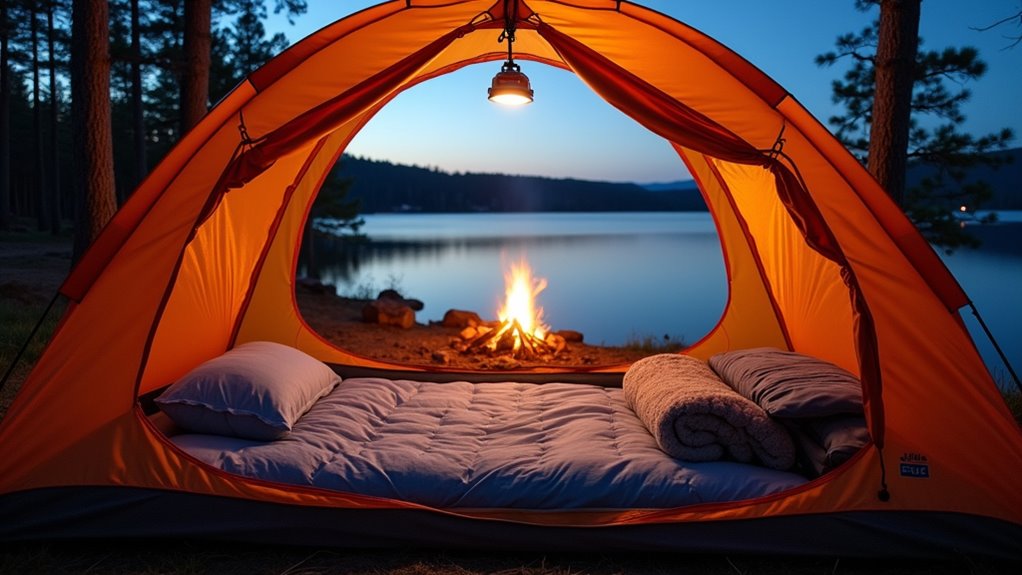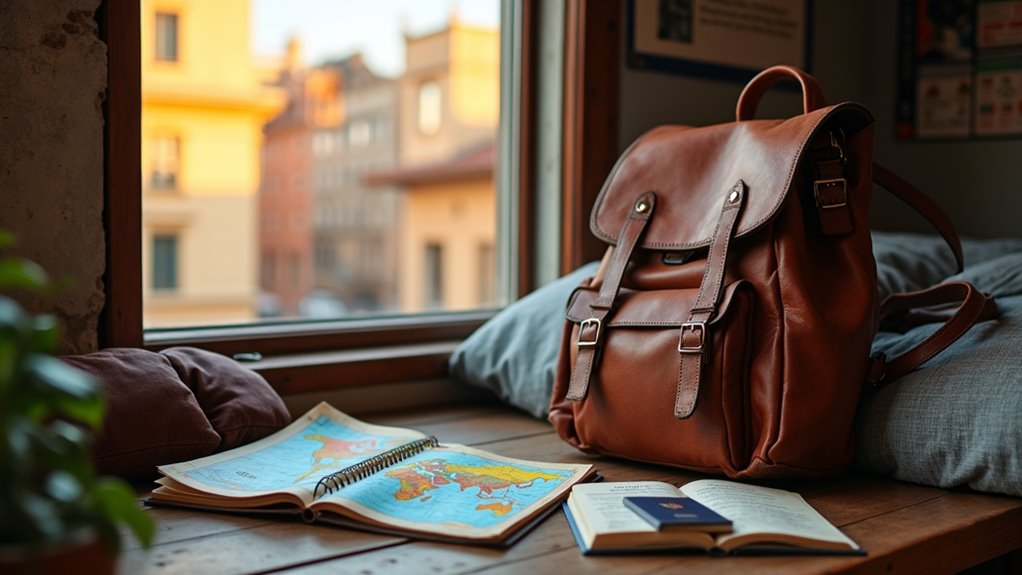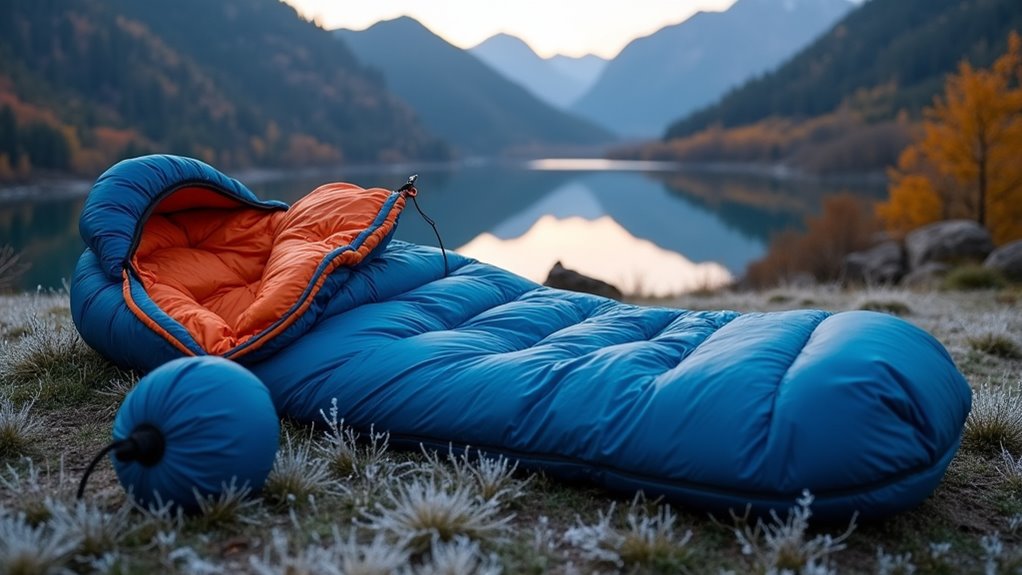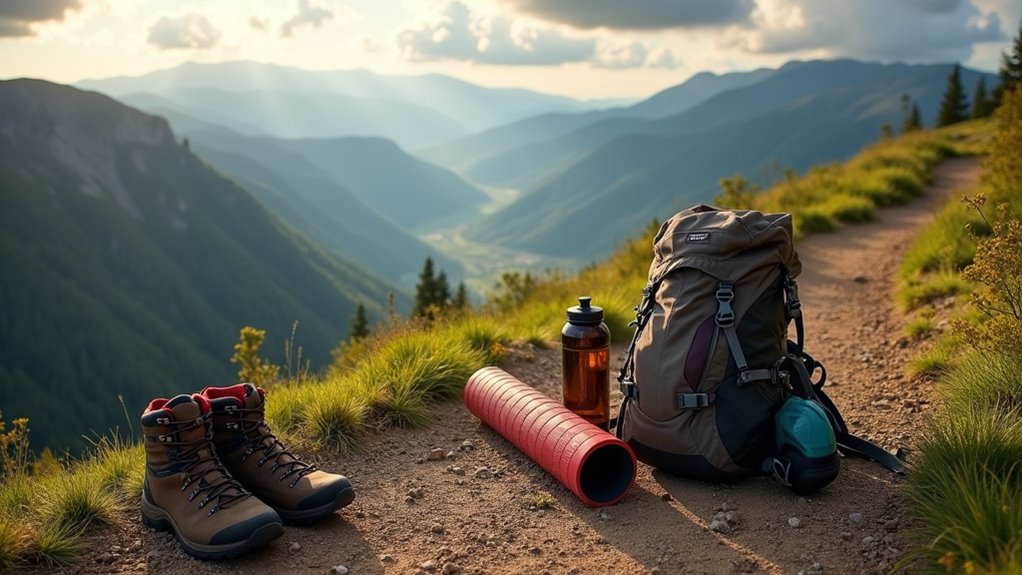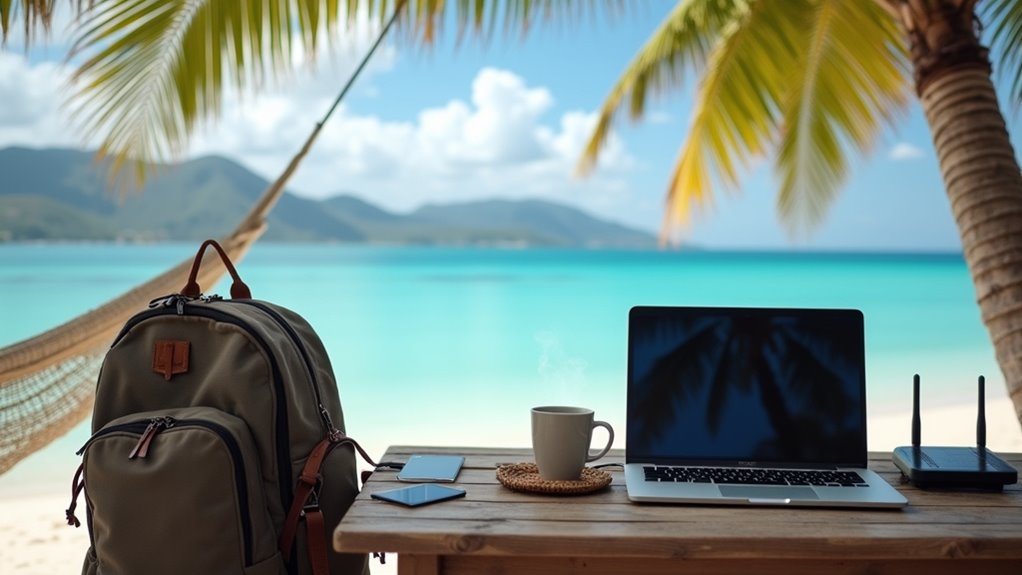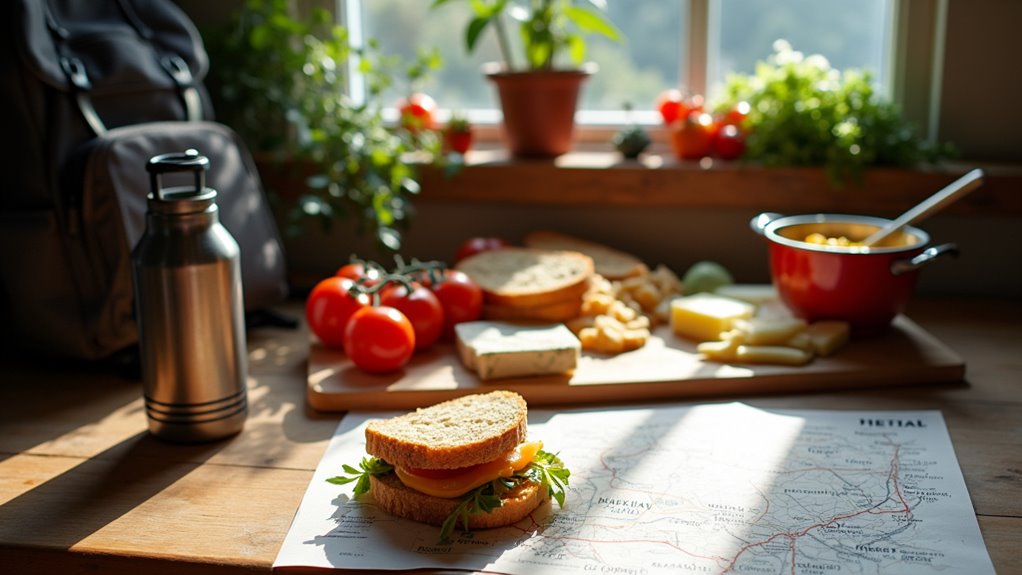When you go camping, you’ll typically sleep in a sleeping bag designed for the expected temperatures, placed on a sleeping pad, air mattress, or cot to insulate you from the ground. You’ll often set this up inside a tent for protection against weather and insects. For comfort, you might add a camping pillow or extra blankets. Your choice of gear should reflect the season, location, and your personal comfort needs. Stay tuned for more detailed advice on optimizing your sleep system.
When you’re planning what to sleep in while camping, your choice of gear directly affects your comfort, warmth, and overall safety throughout the night. You’ll want to start by selecting the right sleeping bag for your expected conditions. Sleeping bags offer essential insulation, with options like thermal sleeping bags for colder environments and rectangular bags for those who prefer extra room. Some sleeping bags include hoods, which help retain heat in cold weather, while specialized models cater to temperature-specific needs—vital for seasonal adjustments.
Your camping comfort and safety start with choosing the right sleeping bag, tailored to your environment and warmth needs.
To avoid losing body heat to the ground, it’s important to use a sleeping pad or mat. Self-inflating sleeping mats and cushioned sleeping mats provide both support and insulation, making a significant difference if you’re camping on hard or uneven terrain. For those seeking even greater comfort, cots or inflatable mattresses elevate you above the ground and can be particularly useful in damp or rocky locations. Integrated sleeping pad and bag systems streamline your setup, combining support and warmth in a single unit. Gear organization solutions like fabric bins and cubes can help keep your sleeping items clean, accessible, and protected from the elements at camp. Some top-rated options, such as the Premium 3D 7.5 Single Self-Inflatable Sleeping Pad, have received perfect customer scores, reflecting a high level of satisfaction with their comfort and performance.
Additional comfort comes from camping pillows and extra blankets or layers, especially if you’re camping in fluctuating temperatures. Multi-layer sleeping systems, which pair quilts with sheets, allow you to adjust your warmth level as conditions change overnight. Creating a cozy environment with proper layering can significantly improve your sleep quality in the wilderness. Brands like Zenbivy and KingCamp offer flexible sleeping solutions, including beds and mats that accommodate various sleeping positions and preferences.
When selecting your sleeping gear, consider key features such as water resistance to protect against rain and dew, breathability to prevent moisture buildup, and compactability for easier transport. Durability ensures your equipment lasts through repeated use, while insulation is critical for maintaining body heat. The ground and weather conditions at your campsite will dictate whether you need more robust waterproofing or extra insulation.
Finally, don’t overlook health factors such as hygiene, allergies, and necessary support. Opt for materials that minimize allergic reactions if needed, and make certain your sleeping setup provides adequate support to prevent discomfort or injury. In areas with insects, consider using netting or repellents to maintain a safe sleeping environment. Your choices should always reflect the specific season, weather, and your personal comfort preferences.
